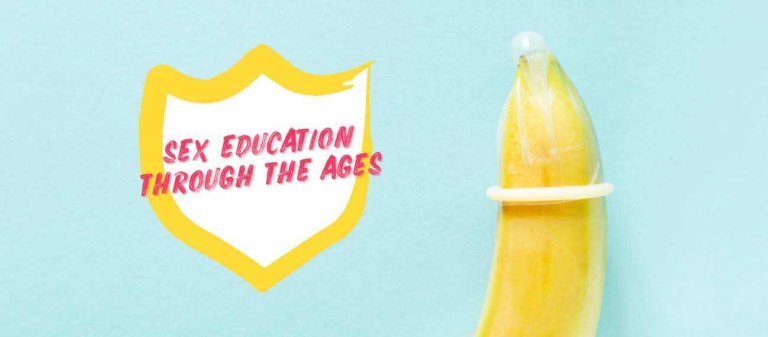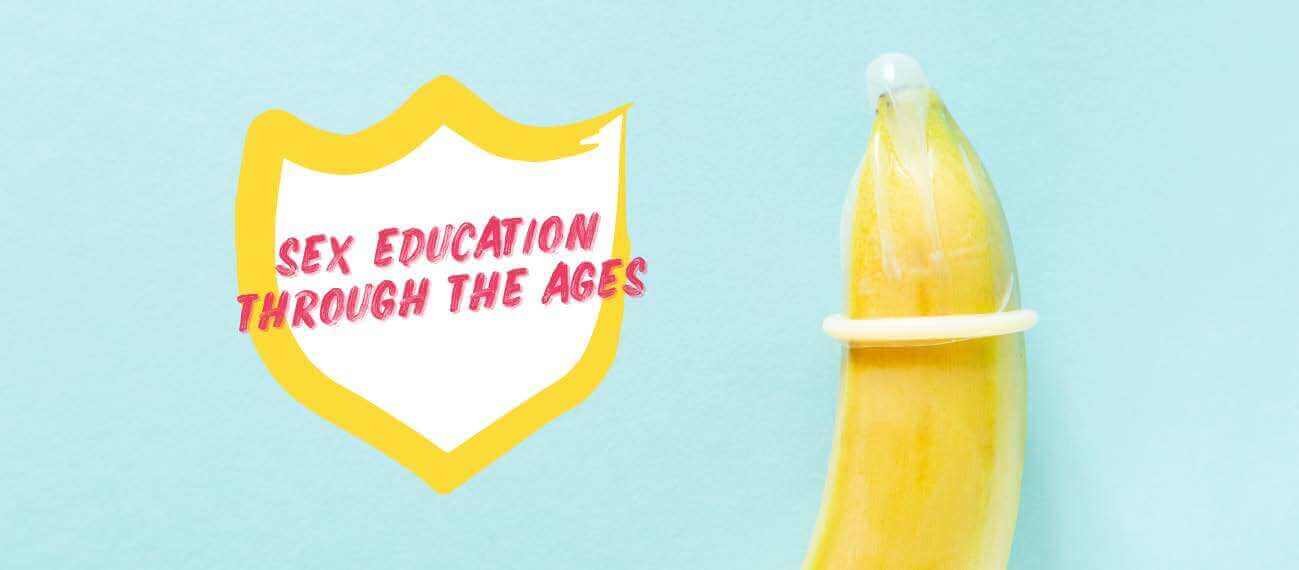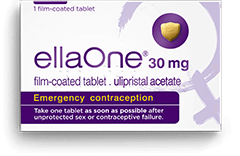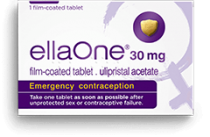Sex Education Through The Ages
“The most memorable thing that happened during sex education was when we had two visiting performers who played guitars and sang a version of Hey There Delilah about someone getting chlamydia. This included the refrain ‘Ohhhh it’s what you do to me, nooowww it hurts when I go pee.’ They were pretty serious about it and were not, as I recall, playing it for laughs. It was unbelievably surreal,” says Chloe, a 25 year old content writer.
Chloe’s bizarre memory of sex education isn’t a one-off. Over half (52%) of 18-35 year olds describe their sex education at school as awkward, according to a recent survey by ellaOne.* The same survey found that more than 4 in 5 (83%) of respondents that have had sex education said they feel like their sex education was only biological/scientific and a quarter (25%) of respondents would describe sex education at school as ‘unhelpful’.
Many people think the Sex Education offered now still isn’t up to scratch, which begs the question: what was it like before? We spoke to some people to find out.
A brief history of sex education
While some schools taught sex education as early as 1889, there was little formal sex education in the U.K. up until the Second World War. When it was discussed, it seems to have been focused around getting girls to protect their ‘modesty’ and develop ‘self control’, while boys were taught about the ‘temptations’.
The outbreak of WWII seems to have increased the need for sex education, primarily to counteract an outbreak of gonorrhoea and syphilis as a result of soldiers contracting and spreading sexually transmitted diseases. Soldiers during this time were often lonely, bored and many ended up having unprotected sex with multiple partners. In 1943, the Sex Education in Schools and Youth Organisations published Britain’s first school sex education guidelines.
Sex education during this time appears to have been mainly biologically focused (and often about animals and plants rather than people) and limited to biology lessons. Pleasure doesn’t seem to have been a factor – unless it was telling boys about the ‘dangers of masturbation’.
By the ‘60s, when the contraceptive pill was first made available in the U.K, sex education appears to have become more human-focused. However, Rae Radford, a 58-year-old social media manager who went to school in the mid ‘70s, says it was ‘mechanical’ and ‘embarrassing’.
Rae says: “We learnt more about the mechanics of what went on rather than the love and affection side. Everyone laughed, it was all highly embarrassing. Nothing was mentioned about same sex couples. They never mentioned the pill or any kind of contraception, it was only from listening to others I realised how you actually ‘got a baby’. They just showed us the science side. I was at an all girls school. No wonder so many had babies young, it was all very hush hush. I wish they’d given us more information about ‘our bodies’ and what to expect, how to be treated, what to tolerate in a relationship, and what’s unacceptable.”
Section 28 and the AIDS epidemic
Sexually transmitted infections (STI) existed before the AIDS epidemic, but after the invention of penicillin the majority were treatable and so weren’t seen as particularly important. This all changed with the AIDS epidemic in the 1980s, in which seemingly healthy people were suddenly falling sick and dying. While a failed cancer drug called azidothymidine (also known at AZT) was available to treat HIV, there were serious side effects.
In 1983, a children’s book called Jenny Lives with Eric and Martin was published. This book was aiming to introduce children to different types of relationships. This prompted Margaret Thatcher, the then prime minister, to say: “Children who need to be taught to respect traditional moral values are being taught that they have an inalienable right to be gay. All of those children are being cheated out of a sound start in life.”
As a result, a law called Section 28 was passed in 1988 by the Conversative government which prevented “promoting the teaching of the acceptability of homosexuality as a pretended family relationship.” The law was eventually repealed, but only as recently as 2003.
What this law effectively did was make it so anyone at school between 1988 and 2000 in Scotland, or 2003 in England and Wales, was very unlikely to have learned about LGBTQ+ sex or relationships in sex education.
Matthew, who went to school in the late ‘70s and early ‘80s, says: “We did sex education when I was about 12 in 1979, years before Section 28. There was no acknowledgement of anything beyond heterosexual sex. My memory is that Section 28 didn’t remove education on LGBT issues, rather it prevented any progress being made towards more inclusive education. I went to a Church school and the sex education was very basic, very biological, all about reproduction, nothing really about pleasure. I’m a gay man. My personal information needs weren’t catered to at all. I wouldn’t have known from my school sex education that oral sex was even a thing, let alone anal sex.”
LGBTQ+ sex education wasn’t mentioned at all and, it appears, heterosexual sex wasn’t much more informative. Dani, a 35-year-old freelance writer who went to a faith school in the late ‘90s, says: “The general message was “don’t do it”. Sex seemed to be presented as something that boys would pressure you into but would cause nothing but pain and sadness for girls. You had to be the one responsible for contraception, you could get pregnant and they would spread rumours that you were easy or frigid. Even within the girls of my year, I had sex quite early on (around 14) and I was instantly branded a “slut” even though I had done my best to keep that I’d lost my virginity a private matter.“
Yessi, a 33-year-old journalist, also found that her sex education was very centred around preventing pregnancy and the pressure on girls to avoid sex. “It was awkward, sexist, and lacked any real substance. At primary school, personal and physical education (PPE) was taught by a lady who was quite probably in her 70s. The only thing I remember is her telling us to wait to have sex until we were ready. If the boy loves you, he’ll wait, she said. That’s as far as it went. Much of what we were told was to do with preventing pregnancy.”
The millennium strikes back
Just before the new millennium, the new Framework for Personal, Social and Health Education (PSHE) was published. This integrated sex and relationships education into the wider curriculum. These lessons focused on sex, but also explored drugs, alcohol, and health and how these things can overlap.
Whilst this was a positive change, the reality wasn’t always so good. According to a 2008 YouGov survey, more than a third of teens said they relied on the internet, magazines, friends or pornography to get advice on sex and 3 in 10 teens said they needed better sex education in schools.
While Section 28 was repealed in 2003, LGBTQ+ relationships still seem to have been neglected. ellaOne’s survey found that just 17% of participants were taught about LGBTQ+ relationships at school.
Chloe, 25, says: “I don’t remember anything other than heterosexual sex being mentioned – this would have been around 2010/2011 so I’m not sure if it was the norm by then to include LGBTQ+ content but it definitely should have been! I didn’t realise I was bisexual until years later, but if they had maybe covered it that would have helped – it took a lot of working out for myself in secret!”
The morning after pill & sex education
There is one topic that is still underserved by sex ed: the morning after pill: ellaOne’s sex education survey found that just 12% of participants first heard about the morning after pill at school and, when they were taught about it in sex education, 43% said it was only briefly mentioned.
This may explain why 41% of respondents mistakenly believe the morning after pill causes an abortion and 40% believe it can make you infertile if used ‘too many times’. These statements are false, but it shows how misinformation can spread when people aren’t learning the facts.
Sex Education has come a long way. The 2020 guidelines (which makes relationship and sexual education compulsory in all secondary schools) will hopefully ensure everyone has access to helpful, reliable and inclusive information about sex, relationships and education. The new curriculum has been updated to include more inclusive discourse around gender and sexuality, it will promote healthy and respectful relationships, and it will also address things like sexting and grooming.
At ellaOne, we are committed to improving people’s knowledge about the morning after pill, because we believe this leads to people feeling more confident in their choice of contraception. We know the morning after pill has been unfairly stigmatised in the past, that stops people from getting the information they need, and allows misinformation to spread. This is why we are so committed to ending the stigma around emergency contraception.
By sharing medically accurate information and busting stigmas around the morning after pill and sex in general, we hope we can do our bit to make the world more accepting and sex positive. For more content like this, see our A Letter To series of first person letters about the things people wish someone had told them.
—
ellaOne® 30mg film-coated tablet contains ulipristal acetate and is indicated for emergency contraception within 120 hours (5 days) of unprotected sex or contraceptive failure. Always read the label.
*‘Sex ed survey: ellaOne’ Censuswide 2020. A sample of 1027 x 18-35 year olds.
The individuals mentioned in this article do not endorse any products or brands.




